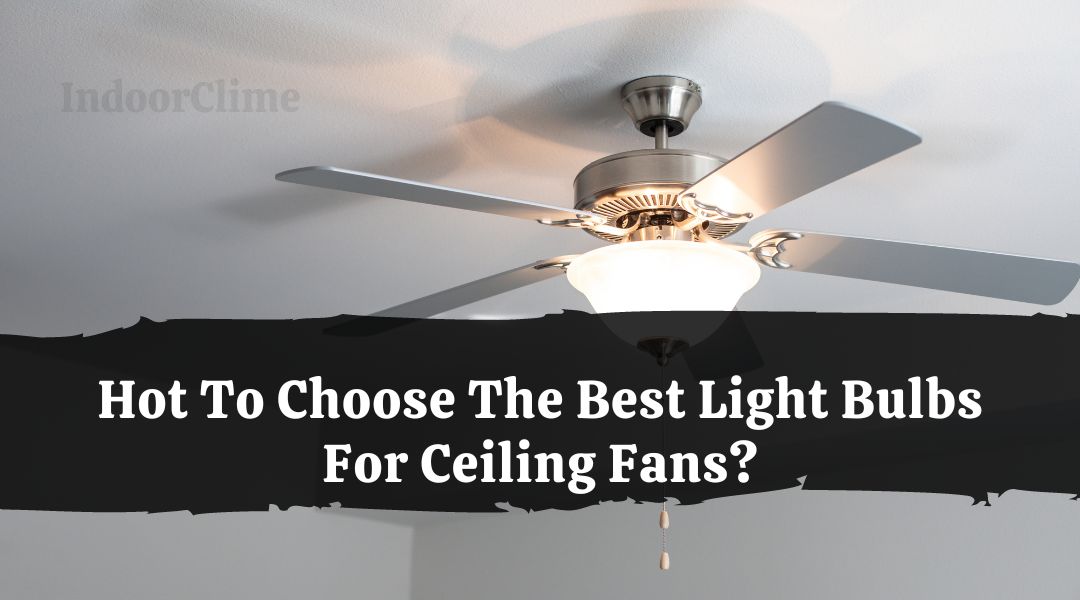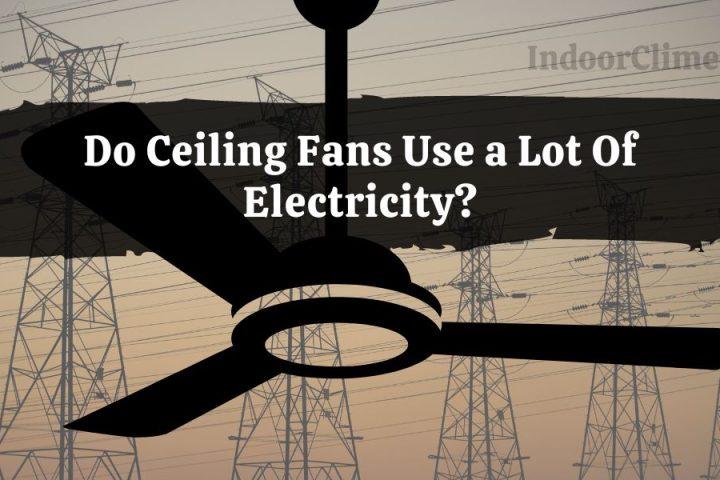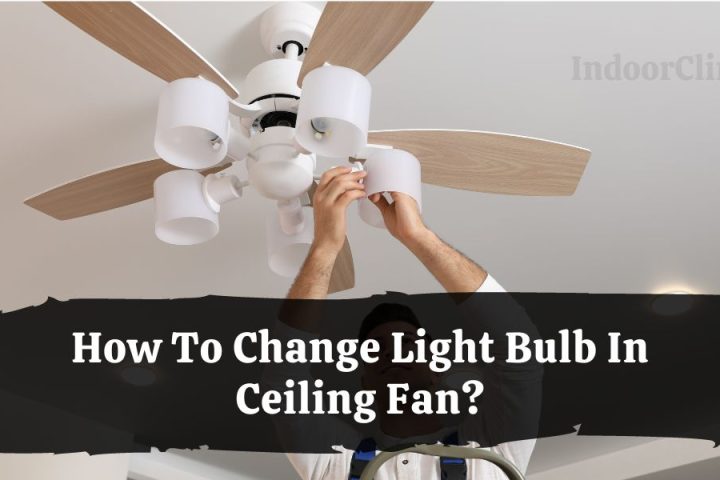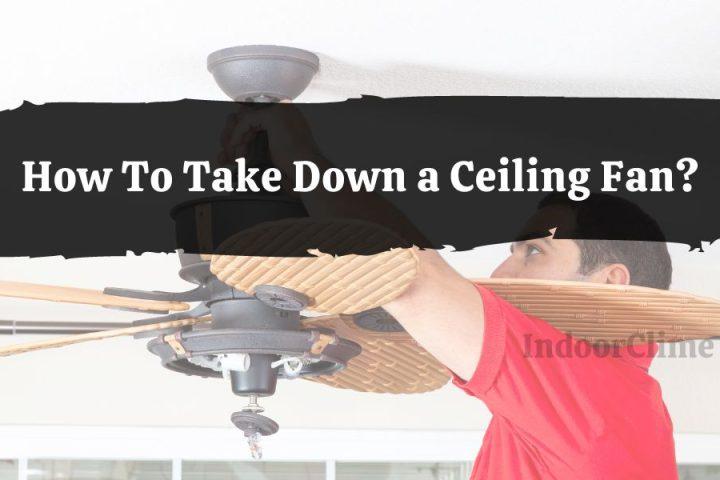Choosing the right ceiling fan light bulbs is more crucial than you realize. Lightning in the living rooms can hurt your health and the surroundings at home.
The eyes can strain and suffer from severe headaches from flickering lights. You will need some attractive light bulbs to help improve the fan’s attractive appearance.
LEDs have the power to alter the environment in your place and improve your mood. They hardly flicker, reducing headache and eye strain risk.
They enhance the fan’s look and are artistically pleasing. Additionally, they add a wonderful flavor and a spark to your living space.
Things To Consider When Choosing The Light Bulbs For a Ceiling Fan

Homes all around the country have ceiling fans with light fixtures, but it can be challenging to know what kind of bulb to buy when yours burns out.
There are various lighting options, depending on the exact function your home’s ceiling fan lights provide. Find out which bulb best suits your needs by reading about it!
Ceiling Fan Light Bulb Wattage
The wattage of the light bulb should be precisely matched to your ceiling fan, your goal energy efficiency, and the environment. As a result of its brighter lighting, a bulb with a higher wattage lets you know how much light is present.
Avoid utilizing light bulbs with high power consumption because they defeat the energy efficiency objective. However, make sure your room is sufficiently bright.
Make sure your room is sufficiently bright. Typically, 36- to 56-inch ceiling fans use 55- to 100-watt bulbs. Before purchasing it, review the manufacturer’s specs to ensure a proper fit and match.
Brightness (Lumens)

To guarantee that it offers sufficient lighting for daily tasks in space 800 and above, look for a bulb with a high brightness output. Anything less than 800 lumens, like a typical 60-watt incandescent bulb, will not be bright enough to illuminate a broad area.
We suggest including task lighting in your ceiling fan lights in the form of table lamps and standing lamps to assist with reading, writing, computer work, and other chores.
Always use an energy-efficient bulb, like an LED or CFL, to avoid spending money and time replacing dead ones.
If the purpose of the ceiling light is to augment the task/general illumination you currently have, a dimmable bulb is ideal.
Controls
One should consider using the ceiling fan while choosing the light bulbs. Some bulbs usually won’t function with dimmer switches, while others are suitable for pull-chain devices.
Check if the light bulb you want is compatible with the fitted remote control. Therefore, verifying the control system before purchasing light bulbs for your ceiling fans is imperative.
Color Temperature

It entirely relies on one’s choices and taste. When creating a bright environment, choose a light bulb with a color temperature value of over 4500K. If you want to be gentle on your eyes, use a bulb that is a little closer and has a 2700K rating.
Generally, soft white lighting with a 2700K–3000K color temperature produces yellow and warm tones that are somewhat more evocative of incandescent bulbs. Higher temperatures, between 3000 and 4000K, produce a yellowish-white or warm white light.
While daylight bulbs with a color temperature of 5500K to 65500K emit a bluish tint. Therefore, your choice will entirely depend on your preferences and the atmosphere you want to create in your space.
Base Type/Socket
Although this won’t immediately impair a bulb’s ability to function, it becomes a bad idea to get bulbs that won’t fit your ceiling fan perfectly.
Although ceiling fans typically use an E12 base, this varies from model to model. So, before buying a light bulb, it is essential to review the specs of your ceiling fan.
You must use the correct bulb for your ceiling fan as soon as you choose it. This is achievable when your chosen bulbs are compatible with the bulb sockets.
Before purchasing the ceiling fan light bulb, ensure the socket type is correct. While some of these alternatives use E12 bulbs, most use E26 bulbs.
Number of Bulbs

But it is extremely typical for homes to have many ceiling fans, and each fan needs a light. Therefore, look into the multiple-pack ceiling fan light bulbs to solve this problem.
You may typically buy bulb packs ranging from 4 packs to 8 packs. Choose a larger pack size, which will probably provide a better value.
Dimmable or Not?
Adjusting the lighting settings and using a dimmable light bulb may create the ideal mood in your environment. However, the light bulb and socket switch must be compatible for this feature to function as intended.
Light Bulb Size And Shape

While manufacturers of ceiling fans utilize various-sized light bulbs in their light kits (per the demand of its design), as a result, these ceiling fans won’t use light bulbs of the same size, which can be confusing when changing or replacing the bulbs.
For ceiling fans, there are four primary types of light bulbs: tiny candelabra, candelabra, intermediate, and medium. The most prevalent ceiling fan bulbs among them are intermediate and candelabra.
While earlier types of ceiling fans come with a fitting for a typical medium light bulb, most current ceiling fan models require tiny candelabra.
You may determine the correct size LED bulb in your ceiling fan by measuring the base of an existing or functioning light bulb. However, these light bulbs will often be measured as follows:
1. Mini Candelabra Bulb – The bulb base (E11) measures 0.43 inches in width and 0.51 inches in height.
2. Standard Candelabra – The bulb base (E12) with 0.47 inches wide and 0.65 inches high.
3. Intermediates Bulb – Its bulb base (E17), which measures 0.54 inches in width and 0.8 inches in height, is slightly larger than the previous two varieties.
4. Medium Bulb – Its base (E26) measures 1.05 inches in height and 1.05 inches in width (1.03 inches).
Purpose. Is Your Ceiling Fan Light Bulb the Only Light Source In the Room?
It may be an eyesore if your ceiling fan is the focal point of your space and has exposed bare light bulbs.
Avoid utilizing spiral CFLs instead, and look for a lightbulb with an attractive form. When your priorities are clear, exploring other possibilities is simple.
Remember that ceiling fan light fixtures may have either candelabra or intermediate bases. The candelabra base is a bit smaller and is typically seen in chandeliers.
Still, the intermediate base, in this case, is associated with a conventional A-lamp for floor and table lamps.
Ceiling Height

The ceiling height where the lights will be put should be considered when selecting ceiling fan light bulbs.
Pick a long-lasting, energy-efficient bulb if you installed the fan on a high ceiling or didn’t want to worry about changing the light bulbs every year.
LED lights are regarded as the most effective and durable standard alternative. As a result, it is somewhat pricey but worthwhile due to the longer bulb life. It also prevents you from climbing a ladder to change the bulb frequently.
CFLs are another excellent choice in addition to LED bulbs. They won’t last as long as LED lights and have fewer dimming options.
Design. Do You Like It?
Whether the ceiling fan light is the primary illumination source for the space or is more of an accent, it still adds a decorative aspect.
Look for lighting fixtures with exposed bulbs or light covers made of glass bowls or other complementary shapes.
Types of Light Bulbs For Ceiling Fans
Selecting the appropriate bulb for your ceiling fan will guarantee proper color temperature, usability, and aesthetic appeal.
Therefore, to choose the ideal bulb for your ceiling fan, one should know various light bulb kinds and their purposes.
LED

According to experts, the greatest lighting option is LED lighting because it uses the least energy. It uses less energy than conventional lights.
The ceiling fans with LED lights are perfect for use in locations where light bulb replacement is challenging, such as if fans are put on high ceilings due to their long lifespan of over 25500 hours.
However, they last longer and use less energy than other options (such as halogen or fluorescent), which saves a lot of time. Additionally, many of these LED lights may be dimmed, providing many more alternatives.
Fluorescent

Compared to incandescent lights, ceiling fans with compact fluorescent light bulbs (CFL) utilize 75% less energy.
While it won’t last as long as LEDs, it will last longer than halogen lights. We advise using them as a single lighting source in your room for multiple uses since these CFL bulbs cannot be dimmed.
We advise against using these bulbs in fixtures where the exposed bulb is present due to its brightness and visual look.
Halogen

Ceiling fan halogen lights use 15% less energy than conventional incandescent lights. Additionally, they generate heat to produce a cozier and more welcoming light that works best in dining or living spaces.
These halogen lamps have appropriate dimming controls, allowing you to adjust the light brightness to your needs. However, they are more prone to overheating than LED light bulbs.
Incandescent Light
 It has been the most popular type of light for the past few decades and is a classic light bulb design. But in recent years, they have been obsolete due to improvements in lighting technology (such as CFLs, halogen, or LEDs).
It has been the most popular type of light for the past few decades and is a classic light bulb design. But in recent years, they have been obsolete due to improvements in lighting technology (such as CFLs, halogen, or LEDs).
These incandescent bulbs use more electricity to operate than their comparable alternatives. Because of this, few manufacturers are willing to produce ceiling fans that use incandescent bulbs.
However, these incandescent lights may be adjusted to the desired brightness level thanks to adequate dimming controls.
Can I Use Any Light Bulb For My Ceiling Fan?
The user handbook for a ceiling fan should be checked to determine the type of bulbs to use because it contains all the necessary information. If you don’t have a user manual, look at the socket. There is a label that lists the light bulb’s wattage and size.
You can see that LED bulbs emit the same amount of light as higher-value lights when using a lower-wattage bulb. Therefore, there won’t be any potential damage.
There is a potential that the wire that is linked to the circuit wiring could become too hot while utilizing a higher-wattage bulb.
Normal bulbs work well, but one should consider their maximum power and socket size to be safe. Make sure the bulb provides the necessary lumen counts and that it does so before making a purchase.





